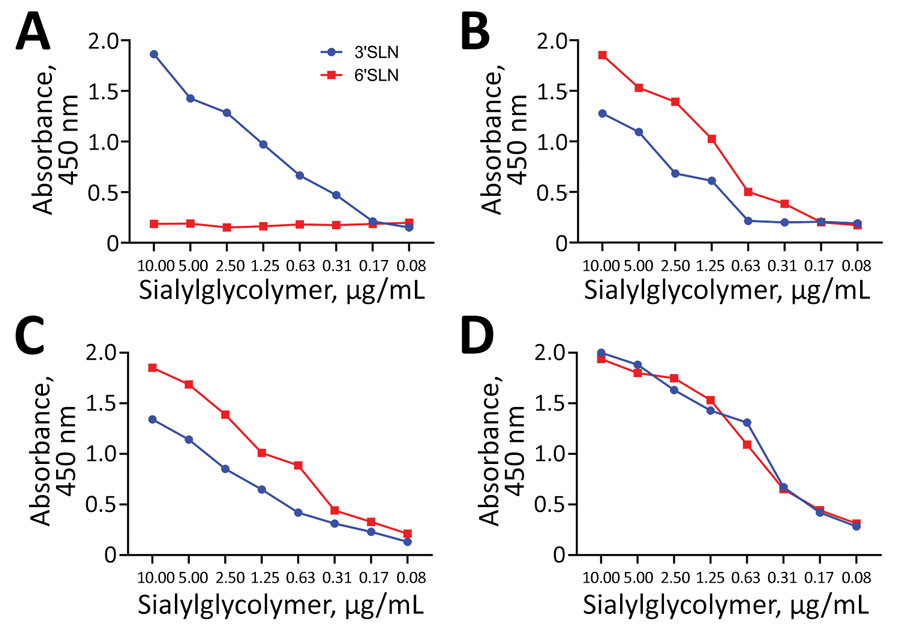Volume 28, Number 8—August 2022
Dispatch
Zoonotic Threat of G4 Genotype Eurasian Avian-Like Swine Influenza A(H1N1) Viruses, China, 2020
Figure 1

Figure 1. Receptor-binding property of 2 G4 Eurasian avian-like influenza A(H1N1) swine isolates from pigs in China. A) The control virus A/mallard/Huadong/S/2005(H5N1) (HDS05) showed an absolute preference for avian-type SAα-2,3Gal. B) The control virus A/Jiangsu/202/2010(H3N2) (JS202) displayed double affinities to both human-type SAα-2,6Gal and avian-type SAα-2,3Gal, but with an overt bias toward SAα-2,6Gal. C) The tested virus A/swine/Jiangsu/HD11/2020(H1N1) (HD11) resembled the human-origin JS202 to possess an obviously advantageous avidity for SAα-2,6Gal over SAα-2,3Gal. D) The tested virus A/swine/Anhui/HD21/2020(H1N1) (HD21) exhibited comparable binding capacity to SAα-2,6Gal and SAα-2,3Gal without apparent preference. The solid-phase direct binding ELISA assay with the synthetic sialyl glycopolymers containing either 3′SLN-PAA and 6′SLN-PAA was applied to estimate the virus binding to avian-type SAα-2,3Gal and human-type SAα-2,6Gal, respectively. The data shown are representative of 3 independent binding experiments. SLN, sialyl-N-acetyllactosamine.
1These authors contributed equally to this article.